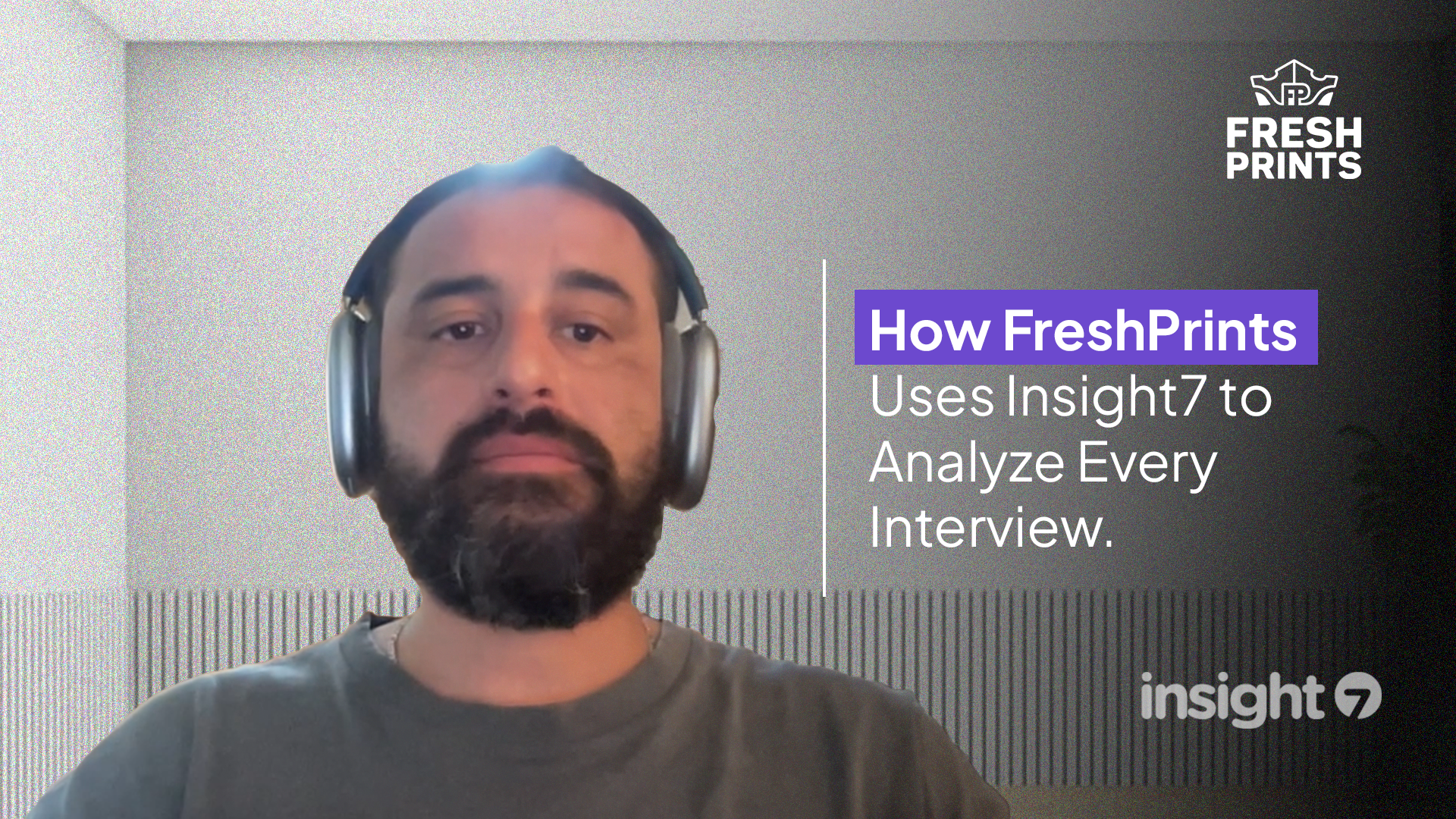How to Train QA Analysts to Become Insight Curators
-
Bella Williams
- 10 min read
Insight Curation Training empowers QA analysts to transform raw data into valuable insights. This journey begins with understanding the nuances of customer interactions and recognizing the significance of each piece of feedback. As firms generate increasing volumes of customer signals, QA analysts must adapt to maintain their roles as key strategists.
Through effective training, analysts can develop analytical skills to distill complex data into actionable strategies. This enables them to bridge the gap between data collection and meaningful insights, fostering collaboration across teams. In this evolving landscape, Insight Curation Training becomes essential for ensuring that QA analysts evolve into trusted insight curators.
Analyze & Evaluate Calls. At Scale.

Understanding Insight Curation Training for QA Analysts
Understanding Insight Curation Training for QA Analysts is essential for enhancing their ability to analyze and interpret data effectively. This training focuses on developing the necessary skills for transforming raw data into valuable insights. As QA analysts, they are uniquely positioned to curate insights due to their interaction with quality assurance processes and evaluations.
The Insight Curation Training encompasses multiple components designed to improve analytical thinking and encourage the adoption of various tools. Analysts learn how to extract meaningful patterns from extensive data sets through hands-on experiences with user-friendly platforms. Enhancing these capabilities yields not only better evaluation skills but also a deeper understanding of customer needs and business objectives, ultimately empowering QA analysts to contribute significantly to organizational success.
What is Insight Curation?
Insight curation is the process of collecting, analyzing, and synthesizing relevant information to derive meaningful insights. This involves not just data gathering but also interpreting findings in a way that benefits decision-making and strategic planning. For QA analysts, transitioning into insight curators requires a keen understanding of data context and its implications for the organization.
The key components of insight curation include identifying pertinent data sources, analyzing trends, and uncovering hidden patterns. Analysts must be skilled in distinguishing valuable information from noise, ensuring that insights are actionable. Furthermore, effective communication is crucial, as curated insights must be presented in a clear, coherent manner to stakeholders. By embracing insight curation training, QA analysts can enhance their analytical abilities and play a pivotal role in driving organizational growth and innovation.
The Role of QA Analysts in Insight Curation
QA Analysts play a pivotal role in insight curation, transforming raw data into meaningful information for organizations. Their keen attention to detail allows them to identify patterns and anomalies that can unlock valuable insights. By meticulously analyzing customer feedback and market trends, they can contribute significantly to decision-making processes. As primary viewers of data, QA Analysts ensure the quality and reliability of insights, making them essential for any insight curation training program.
Furthermore, QA Analysts must evolve beyond traditional roles to embrace a more collaborative and proactive approach. This shift involves engaging with data in a deeper manner and asking the right questions to uncover hidden insights. They must become adept at utilizing various analytical tools and methodologies to streamline their processes. Thus, training QA Analysts not only focuses on technical skills but also nurtures their ability to think critically about the data they handle, ultimately enhancing the quality of insights generated.
Extract insights from interviews, calls, surveys and reviews for insights in minutes
Developing a Holistic Insight Curation Training Program
To develop a holistic Insight Curation Training program, it is essential to create a framework that empowers QA analysts with the necessary skills and tools for effective curation. The training should incorporate a blend of analytical thinking, understanding customer needs, and utilizing relevant technology that enhances insight generation. By integrating practical exercises and real-world scenarios, participants can bridge the gap between theoretical knowledge and practical application.
First, focus on sharpening analytical skills, enabling QA analysts to interpret data insights critically.
Next, guide them in leveraging various insight curation tools such as Tableau and Google Data Studio. These platforms can automate data visualization, enhancing clarity and decision-making. Encourage hands-on practice to foster confidence in using these tools. This multifaceted approach ensures that QA analysts evolve seamlessly into insightful curators capable of transforming data into actionable intelligence, yielding higher value for organizations.
Step 1: Building Analytical Skills
To start the journey of transforming QA analysts into effective insight curators, building analytical skills is paramount. These skills are the foundation for uncovering valuable insights from data and fostering a more profound understanding of customer needs. Encouraging analysts to adopt a critical mindset allows them to not only assess the data but also to interpret it meaningfully within the context of user experience.
Analytical skills can be nurtured through a variety of practices. First, encourage analysts to engage in regular data analysis exercises that challenge their existing knowledge. Second, facilitate workshops on data storytelling techniques to help them convey their findings compellingly. Third, teach them how to apply statistical methods relevant to their metrics. Lastly, create an environment that promotes continuous learning through access to resources like relevant articles, courses, or forums. This diverse approach to building analytical skills will lay a solid foundation for successful insight curation training.
Step 2: Leveraging Insight Curation Tools
Utilizing insight curation tools is essential in transforming QA analysts into effective insight curators. These tools simplify the process of gathering and analyzing data, enabling analysts to focus on key customer insights. By employing user-friendly platforms, QA analysts can access vast amounts of information without needing deep technical expertise. This accessibility democratizes insights across teams and encourages collaboration in interpreting data.
Training sessions that introduce these tools should emphasize their features and real-world applications. For example, the integration of platforms like Tableau and Google Data Studio allows users to visualize data effectively, making patterns and trends more apparent. By familiarizing analysts with various functionalities, such as creating interactive dashboards or generating comprehensive reports, they can derive actionable insights quickly. With the right training and tools in hand, QA analysts can confidently navigate complex data sets, ultimately enhancing their roles as insight curators.
- insight7
Transforming QA analysts into skilled insight curators requires a focused approach, especially through Insight Curation Training. This training emphasizes analytical skills and familiarity with tools that facilitate insightful data management. It is crucial to not only comprehend the data but also to narrate its implications compellingly.
In your journey through insight curation, it’s essential to adopt a structured training program. First, emphasize building strong analytical skills, allowing analysts to accurately interpret data trends and customer signals. Following this, introduce them to specialized tools like Tableau or Power BI, which are invaluable in visualizing and understanding complex data sets. The end goal of Insight Curation Training is to enable QA analysts to transition smoothly into roles where their insights drive strategic decision-making effectively.
- Tableau
Tableau serves as a powerful tool in the realm of insight curation. It empowers QA analysts to visualize complex datasets and translate data into understandable insights. By using Tableau, analysts can create dynamic dashboards that showcase trends and highlight key metrics effectively. This visual approach enhances their ability to communicate findings, making it easier for stakeholders to grasp essential information at a glance.
Incorporating Tableau into the insight curation training involves several key practices. First, analysts should learn to manipulate data using Tableau’s intuitive interface. Next, they should focus on building interactive visualizations that can convey complex information simply. Finally, analysts must understand the importance of storytelling through data, ensuring that insights resonate with the intended audience. By mastering Tableau, QA analysts can evolve into proficient insight curators, driving informed decisions with clarity and precision.
- Power BI
Power BI stands out as a powerful tool for QA analysts transitioning to insight curators. Leveraging its dynamic features allows analysts to effectively visualize and interpret data, facilitating a deeper understanding of the insights that matter. By integrating datasets from various sources, Power BI enables analysts to identify patterns and trends that drive actionable decision-making. This capability is essential in the context of Insight Curation Training, as it equips analysts with practical skills for data manipulation and analysis.
Utilizing Power BI involves several key components that enhance the overall training experience. First, creating interactive dashboards allows analysts to track important metrics in real time. Second, the incorporation of automated reporting functions reduces manual workload and streamlines workflows. Lastly, Power BI’s ability to foster collaboration ensures that insights are shared effectively across teams. Each of these elements plays a crucial role in ensuring that QA analysts not only understand the data but can also curate valuable insights for their organizations.
- Google Data Studio
Google Data Studio serves as a powerful tool in insight curation training, enabling QA analysts to visualize and share data effectively. This platform transforms raw data into insightful reports, allowing analysts to create dynamic dashboards that can tell a compelling story. By using Google Data Studio, analysts can easily connect various data sources, such as spreadsheets and databases, streamlining their workflow and enhancing their ability to extract relevant insights.
Moreover, Google Data Studio supports collaborative efforts, facilitating teamwork among QA analysts. Through its real-time sharing and editing capabilities, teams can work together to refine their data presentations, ensuring that insights are not only accurate but also impactful. This collaborative aspect is crucial for developing analytical skills, as it encourages dialogue and constructive feedback. By integrating Google Data Studio into their training, organizations can empower QA analysts to become adept at insight curation, ultimately leading to data-driven decision-making.
- Looker
When exploring the capabilities of Looker, it’s essential to recognize its role as a powerful tool for data visualization and insight generation. Looker enhances the analytic abilities of QA analysts, allowing them to transform raw data into meaningful insights. By utilizing Looker's intuitive interface, analysts can easily create customized dashboards and visualizations that highlight key performance indicators relevant to their projects.
This user-friendly platform supports data exploration, which is crucial for developing a deeper understanding of trends and patterns. As QA analysts undergo insight curation training, integrating Looker into their toolkit enables them to deliver actionable recommendations based on data-driven decisions. Additionally, the collaboration features foster teamwork, empowering analysts to share insights and encourage a culture of data literacy within their organizations. Ultimately, this transition to insight curators equips QA analysts with the skills necessary to leverage data effectively and drive impactful outcomes.
Conclusion: Transitioning from QA Analysts to Insight Curators
Transitioning from QA analysts to insight curators marks a significant evolution in their professional roles. As QA analysts hone their analytical skills, they unlock new capabilities to interpret data meaningfully. Insight curation training empowers these professionals to draw actionable insights, allowing organizations to make informed decisions. This shift not only enhances individual skill sets but also contributes to a culture of data-driven decision-making.
By fostering a mindset focused on insight generation, organizations can fully utilize their QA teams’ potential. Encouraging continuous learning and exploration of advanced analytical tools facilitates this transformation. As insight curators, these individuals can bridge the gap between data and strategy, ultimately driving improved outcomes for their teams and stakeholders.







